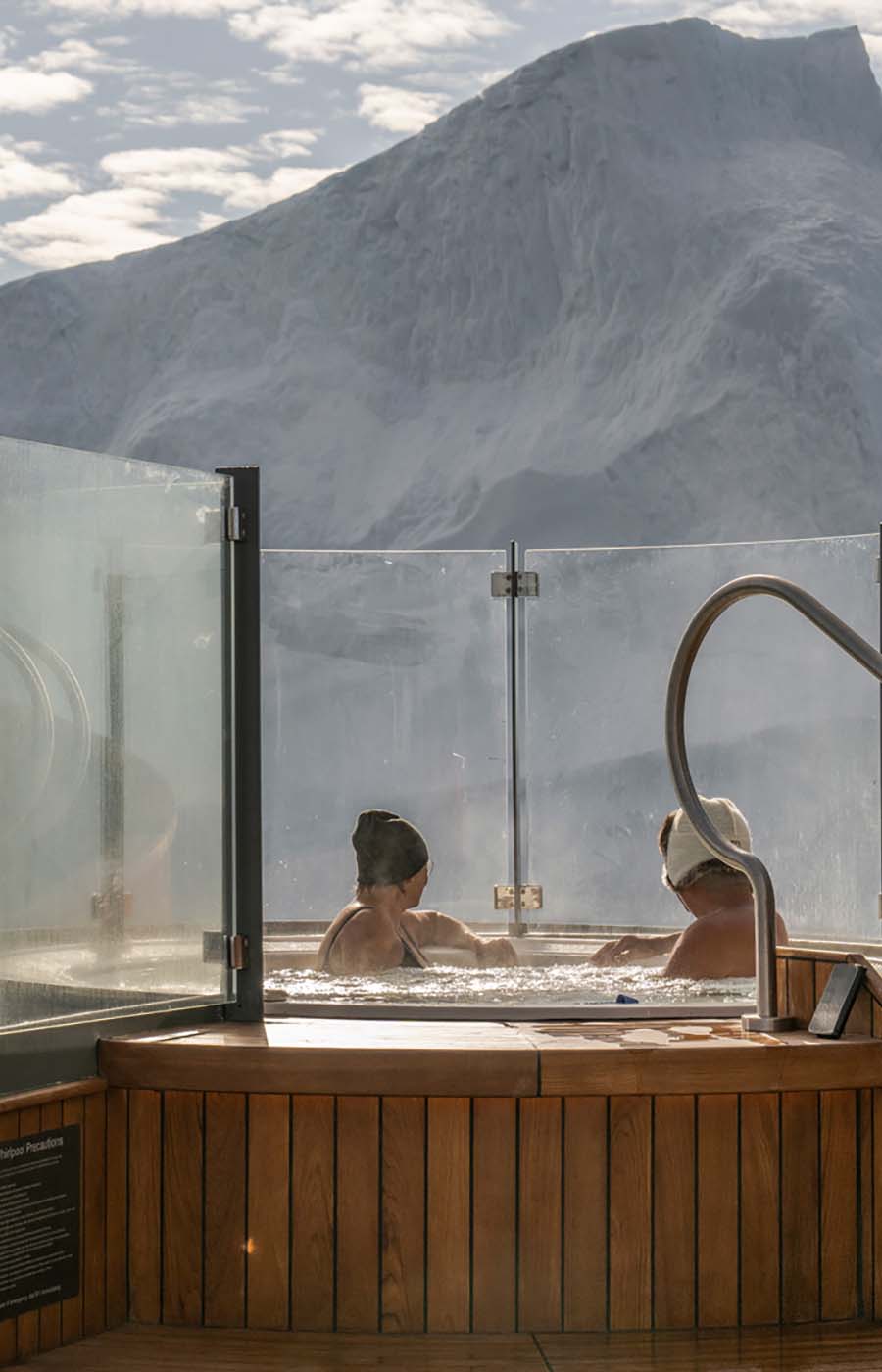This stately natural wonder makes for a viewing experience that’s nothing less than epic.
Love glaciers? The Hubbard Glacier should be at the top of your list — if it isn’t already. At 76 miles long, 7 miles wide, and 600 feet tall (350 feet above the waterline), it’s the longest tidewater glacier in North America. Both the Hubbard and its surrounding environment make for an awe-inspiring experience; it’s nature at its most starkly grand.
History & Facts
Beginning at Mt. Logan in Canada’s Yukon Territory and ending within Alaska’s Wrangell-St. Elias National Park & Preserve (a thrilling, exploration-worthy destination all on its own), Hubbard Glacier was named for Gardiner Hubbard — the National Geographic Society’s first president — in 1890. The ice on its terminal face originally fell as snow as long as 500 years ago. Currently static, it has advanced at a leisurely pace overall since the late 1800s — though it has made a couple of unexpected surges in the past several decades, including one in 2002 that closed off Russell Fjord, turning it into a lake.
How to Explore the Glacier
The Hubbard Glacier lies off the coast of Yakutat, Alaska (200 miles northwest of Juneau), in Disenchantment Bay at the end of Yakutat Bay. You can see it from the coast if you are spending time in Yakutat, but the best way to get an extensive view of it is by boat or cruise ship. It’s included on a number of Alaskan cruises, giving travelers a no-effort chance to behold the glacier’s size, scale, and shape within the context of its environment. Weather permitting, a ship can get within a half mile of the glacier’s awe-inspiring face. Another thrilling viewing option is by air, with a number of local companies offering flightseeing tours of Hubbard and other glaciers nearby.
Best Time to Go
While Alaska is obviously known for its spectacularly icy scenes, those can be tough to enjoy in the actual winter, when high temps frequently dip below 32 degrees F (0 C). And sometimes way below. If you want to go all in on the chill, that’s the time to go. But for most, early summer (from mid-June to mid-July) is generally the best time to go, with high temps cool to moderate (42-60 degrees F, or 5-15 C).
What to Wear
Assuming you’re viewing the glaciers by boat or from Yakutat, dressing for the weather is fairly easy. In summer, with more moderate temperatures, you can opt for a slightly lighter (yet still toasty) coat and fewer layers beneath. If you decide to venture there in winter, you’ll need seriously warm, insulating clothes — thick waterproof socks, boots, lightweight-yet-warm layers (merino wool, or high-performance heat-retaining fabrics found at sporting goods stores), and a very warm, filled parka. Lastly, note that Yakutat and the surrounding area see an above-average amount of yearly rainfall — not to mention snow, of course — so focus on waterproof fabrics for your winter gear and pack a rain slicker for summer. Lastly, chunky rubber soles are your friends; save the chic shoes for dinner!

